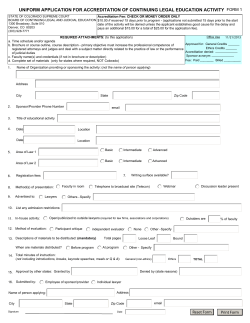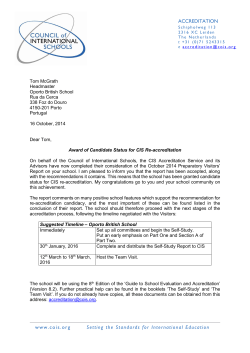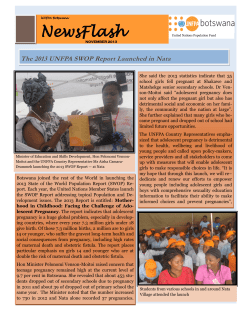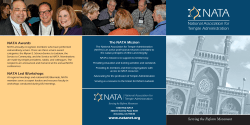
Medical Testing – the Accreditation Oz Experience
Medical Testing Accreditation – the Oz Experience Dr Michael Harrison, Chairman Medical Testing Accreditation Committee Australian Pathology ~ 50 million testing episodes pa > 50% of population has 1 or more tests each year 70% of medical decisions All cancer diagnoses Providers - Private 60%, Public 40% Funding – Government >90% Funding ~ $3b pa ( 3-4% of Health $) Risks: Laboratory High Specimen mixup Lost specimens Misdirected reports Incorrect interpretation Specimen artefact Incorrect response to request Analytical problems Low (however the most serious common error is failure to act on a significant result) What is Quality? The right result? Lack of errors? Improved health outcome? Increased efficiencies Quality = Right The challenge is getting everyone to agree what right is.... Graph of life expectancy at birth in the top 20 OECD countries in 2005 Graph of mortality rates for all cancers for males and females in 2004 Graph of health expenditure of OECD countries for 2004, both per capita and as a percentage of GDP Quote A pessimist sees the difficulty in every opportunity; while an optimist sees the opportunity in every difficulty. NATA/RCPA laboratory accreditation program Role of NATA & RCPA Regulatory framework – HIA Medicare Australia Standards - NPAAC & ISO Accreditation process Quality system accreditation Quality Assurance Programs Role of NATA and RCPA Joint program established in early ’80’s – formal arrangement by way of MOU NATA provides secretariat, Lead Assessors, infrastructure RCPA provides professional advice (ACs), voluntary assessors, mechanisms for review of Fellows if necessary Strong program, unique in world terms Regulatory framework Prior to 1986 – voluntary 1986 - mandatory scheme linked to Health Insurance Act 2003 – Deed for inspection of premises for the purpose of sub-section 23DN(1) of the Health Insurance Act 1973 and, provision by NATA of pathology laboratory assessment reports, and related arrangements Medicare Australia Reports issued to MA following each assessment activity Laboratory responsible for submitting to Medicare with APL application/renewal Applicants – benefits cannot be paid until a report is provided (post Advisory Visit) Renewal – (requires successful accreditation) approval period restated Accreditation requirements NPAAC and ISO What are the requirements (standards) for accreditation? ISO – 15189 (AS 4633) NPAAC – general & specific requirements Field Application Document Other Australian Standards Expert organization guidelines NPAAC NPAAC Philosophy Requirements for Pathology Laboratories (2007 Edition) NPAAC Document heirarchy NPAAC Document heirarchy – Tier 4 NPAAC Document heirarchy – Tier 5&6 NPAAC Strategic Plan 2010 Accreditation requirements NATA Field Application Document (FAD) Every 2 years Resolutions of issues raised at assessment General information about NATA accreditation process Available from NATA website (free to accredited laboratories) Accreditation requirements review ISO – via Standards Australia NPAAC – via drafting group review & draft circulation for public comment NATA FAD – via professional society representation on the Medical Testing Accreditation Advisory Committee NATA accreditation NATA accreditation process Outcome of NATA accreditation Typical Accreditation report NATA/RCPA Typical Accreditation report Accreditation report - initial Accreditation report response NATA website NATA website NATA website NATA/RCPA laboratory accreditation program Role of NATA & RCPA Regulatory framework – HIA Medicare Australia Standards - NPAAC & ISO Accreditation process Quality system accreditation Quality Assurance Programs Monitoring Quality of testing RCPA Quality Assurance Programs Interim Reports including Quantitative, Qualitative, Clinical Review, End-of-Cycle, Performance Summary, Error Analysis, Supervisor Report, Subgroup Report and Patient Report Comments Pathology Accreditation Medical testing Accreditation 2011 snapshot 640 accredited sites 28 new sites pa 379 assessments pa 1040 assessors 8 complaints Where are we now? • Mature quality framework – 25y of refinement • Proven quality improvement – with reduction in costs • Clearly other factors at work too – Competitive environment • KPI and non-analytical QA programs in development: – Risk-based framework – Evidence and outcome driven – Adverse incidents – Patient Safety – Underperforming laboratories Conclusions • The Australian pathology accreditation system has produced excellent outcomes at reasonable cost • NPAAC and NATA, working with professional groups, have been key • Ongoing streamlining of the framework is underway • New challenges relate to -omics, PoCT, workforce shortages I am easily satisfied with the very best.
© Copyright 2025


![National University Virtual High School [2014-2015]](http://cdn1.abcdocz.com/store/data/000348438_1-3a80ae3134ab49395c6a7578fe5bdf0b-250x500.png)









